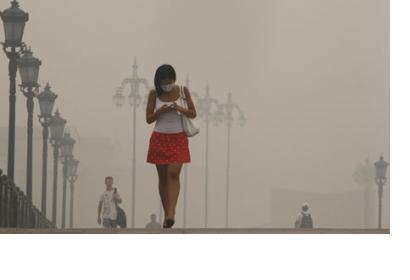Participants of a meeting on 24 August 2011 on monitoring and control of natural and human-induced emergency situations in the 'Rossiyskaya gazeta' press centre demonstrated that satellite imagery data has been increasingly widely used for emergencies monitoring and response. One of the technologies of thermal anomalies monitoring is the detection using images in the infra-red band of the MODIS camera of Terra/Aqua satellites. Burning areas are analysed using detailed SPOT 4/5 images, and damage to the forest as a result of fire is evaluated.
ScanEx vice-president Olga Gershenzon noted that the company has been working with data of satellites, built and put into orbit by various countries around the world. Some satellites have been functioning for more than ten years and, should the Terra and Aqua satellites malfunction, permanent fire-situation monitoring will no longer be available for Russia and CIS countries. There are no Russian fleets of 'monitoring' satellites available in the country. Moreover, there are no plans whatsoever to realise such a constellation.
Deputy Head of the Russian National Center for Crisis Management Alexander Yepikhin also outlined: "It would be incorrect for such a powerful country like ours to depend on foreign satellites". This is not just a problem of dependence on foreign satellites. Nowadays data from such satellites is delivered only once in six hours. "Russia needs its own system of monitoring of forest conditions at the data transmission frequency of once every two hours," believes Alexander Yepikhin.
The participants also noted that monitoring data should be available to all interested departments and to the public at large by setting up an inter-departmental interaction.
Each summer the Russian forest suffers from fires. On the one hand a forest fire is one of the natural phenomena in the life of the forest. It turns out that there are certain types of trees that need the temperature of a fire to drop seeds into the soil. However, this by no means can justify human negligence.
Materials of operational satellite-based monitoring are updated on a daily basis at the "Kosmosnimki - Fires" web portal (fires.kosmosnimki.ru/). A month ago ScanEx company added an analytic add-on over the basic algorithm of 'hot spots' detection. Thanks to this, separate spots of probable fire blazes can now be combined and data about the fire areas can be received and their probable boundaries can be detected in automatic mode.
Using satellites that are part of the monitoring system, 70-75% of fires can be detected (if there are no clouds) and 60-65% in low-cloud conditions. If it is a forest fire the area of 30 by 30 metres can be detected by satellite. However, it also depends on the burning intensity. A satellite may detect a burning house, though the burning area is much smaller in this case.
ScanEx has established, supports and continues to develop departmental networks for receiving satellite data of Roshydromet, Russian EMERCOM, Ministry of Natural Resources and regional centres of space monitoring based on educational and scientific organisations and institutions.

